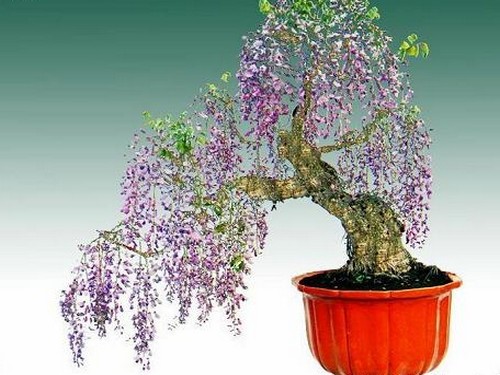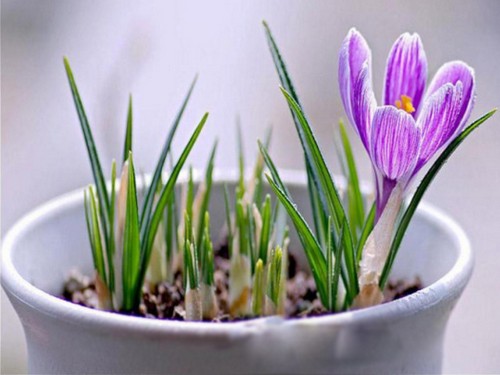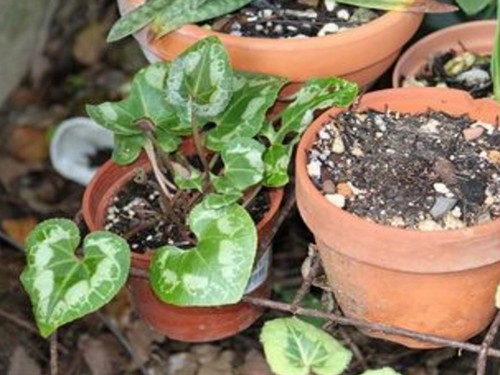How do you grow wisteria? Wisteria planting method
Wisteria is a large woody deciduous vine of the genus Wisteria in Leguminosae. The stems are tangled, the branches and leaves are dense, the purple ear hangs in early summer, the flowers are numerous and fragrant, the leaves are full of leaves and the pods are numerous in the heat of summer, it is an excellent ornamental vine. It can be propagated by sowing, cutting, grafting, pressing, dividing plants and so on, and sowing, cutting and grafting are often used in production.

At the turn of spring and summer, the seedlings are in the vigorous growth period and need more water, so it is suitable to irrigate for 2 or 3 times. In the plum rain season, attention should be paid to drainage, and irrigation times should be increased in summer drought. At the end of autumn, in order to make the organization healthy and conducive to overwintering, there is generally no irrigation. There is no irrigation in winter. Topdressing can be combined with watering to improve fertilizer efficiency. From June to the first ten days of August, urea 3~5kg per mu was topdressing and watering at the same time. Once every 10-15 days, a small number of times, to prevent root injury and burning seedlings. Stop topdressing in late August to prevent seedlings from overgrowing and conducive to overwintering.
Manual weeding to prevent chemical weeding from causing drug damage. Weed at least once a month from April to September to clean the weeds in seedbed, chamber ditch and perimeter ditch, so as to promote the healthy growth of wisteria.
Wisteria has deep main root, shallow lateral root and is not resistant to transplantation. more soil must be carried when transplanting, and a support should be set up after planting so that the branches and leaves can still climb. Before sprouting and spreading leaves in early spring, ditching and fertilizing around the roots is beneficial to the growth of stems and leaves. Through pruning in summer, excessive branches are removed, weak branches are cut short, flower buds are formed, dense branches and diseased branches are thinned in autumn, so as to blossom the following year.
1. Watering. Wisteria consumes a lot of water, but it is still better to be dry than wet. The potted soil is only wet but not dry, which is not conducive to its flowering. Watering should grasp the principle of whether it is dry or not, and if it is watered thoroughly. Especially during the period of flower bud differentiation in August, water should be deducted properly. Normal watering can be carried out in September. Water less after the leaves fall in late autumn. In the spring and summer growth period, should be fully watered, often keep the basin soil moist. It is necessary to control watering after autumn to prevent the sprouting of autumn shoots, which is conducive to more flowering in the following year.
2. Fertilization. The frequent application of thin fertilizer is an important measure to make wisteria blossom. During the growing period, it can be combined with watering and apply thin cake fertilizer once a month until the fertilizer is stopped from July to August. Fertilization should be continued in September, but the frequency and concentration should be reduced appropriately. Before flowering, phosphorus and potassium fertilizer can be applied appropriately. Wisteria applies thin cake fertilizer and water every half a month during the growing period, and phosphate fertilizer before flowering can make the flowers flourish and increase the ornamental effect.
Fertilization and maintenance of wisteria should be divided into three steps:
The main results are as follows: (1) in autumn, base fertilizer is applied around the stem of wisteria, organic fertilizer is better, and then watered.
(2) before sprouting in early spring, it is appropriate to apply nitrogen, phosphorus and potassium concentrated fertilizer once every half a month, twice, and once more before flowering, do not use too much nitrogen fertilizer, otherwise it will only grow branches and leaves and blossom sparsely or not.
(3) after flowering, the pedicel should be pruned in time, and the mixed fertilizer or base fertilizer dominated by nitrogen should be applied once.
3. Pruning. When wisteria sprouts in spring, the dense buds should be picked properly. When the new branch grows to more than 20 centimeters long, the excessive part can be cut off. In peacetime, pay attention to cutting off long branches, diseased branches and weak branches at any time. Pruning should also be carried out during the dormant period. In September, the old leaves of wisteria are easy to age and sag, affecting their appearance. Old leaves can be removed to promote the germination of new leaves. The sprouting new leaves are green and delicate, which can postpone the deciduous period and prolong the viewing period.
4. Diseases and insect pests. Wisteria has withered leaf moths, aphids, diamondback moths and other leaf-eating pests. The withered leaf moth can be sprayed with trichlorfon or phoxim 300 times. Aphids and diamondback moths can be sprayed with 1200 times of 80% methyl topiramate (it is better to control them between May and June).
Warm reminder to you:
Improper maintenance and management of potted wisteria often lead to the phenomenon of non-flowering. Potted wisteria: if overwintering indoors, the room temperature should not be on the high side, otherwise it will not be fully dormant, consuming too much storage nutrients and affecting flowering in the coming year. Proper fertilization: lack of fertilizer or excessive fertilization of potted wisteria will affect flowering. Generally, diluted cake fertilizer and water are applied before flowering and long-acting phosphate fertilizer is applied after flowering to promote flower bud differentiation. No fertilizer is applied in winter and summer. The vines of potted wisteria will elongate and climb to consume nutrients. It is found that this situation should be cut off immediately, otherwise the twining vines will grow rapidly and the plant will not blossom.
Time: 2019-05-25 Click:
- Prev

Planting techniques of potted saffron
Saffron, also known as saffron, saffron, belongs to the Iridaceae perennial herb, about 15 cm high, the bulb oblate, the outer layer of brown membranous scales. Leaves long linear, veins white, margin slightly revolute; petals 6, purple, stamens 3, pistil 1, style 3, style protruding perianth
- Next

Planting technique of cyclamen (method)
Cyclamen is a perennial bulb flower of Primulaceae. At present, it is cultivated for more than one year in potted flower production. Because of its wide variety, unique flower shape, bright color, long flowering period and Christmas, New Year's Day and Spring Festival, it is deeply loved by people and has become an enduring Lunar New year potted flower.
Related
- Fuxing push coffee new agricultural production and marketing class: lack of small-scale processing plants
- Jujube rice field leisure farm deep ploughing Yilan for five years to create a space for organic food and play
- Nongyu Farm-A trial of organic papaya for brave women with advanced technology
- Four points for attention in the prevention and control of diseases and insect pests of edible fungi
- How to add nutrient solution to Edible Fungi
- Is there any good way to control edible fungus mites?
- Open Inoculation Technology of Edible Fungi
- Is there any clever way to use fertilizer for edible fungus in winter?
- What agents are used to kill the pathogens of edible fungi in the mushroom shed?
- Rapid drying of Edible Fungi

